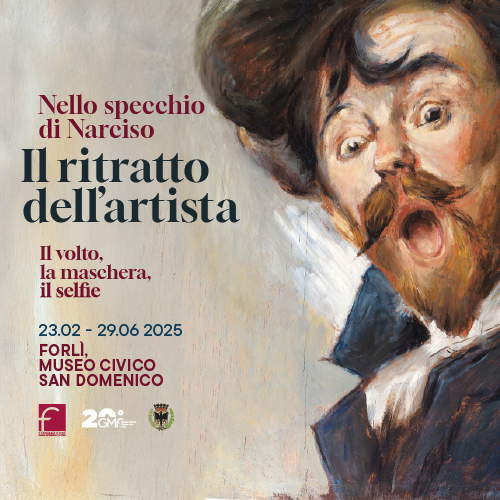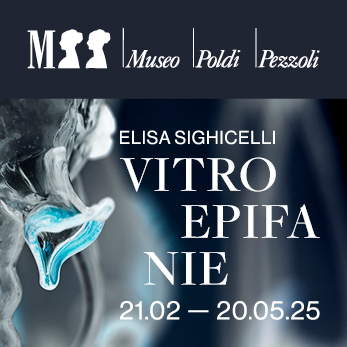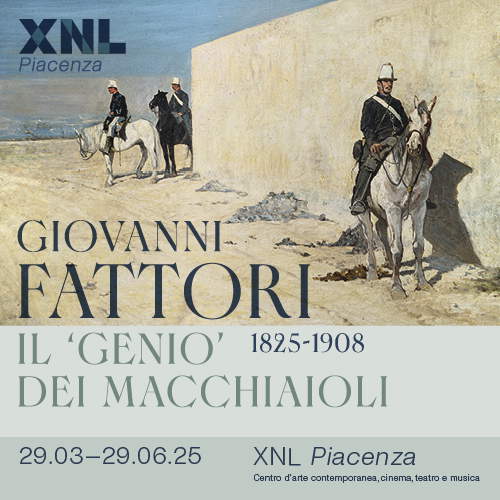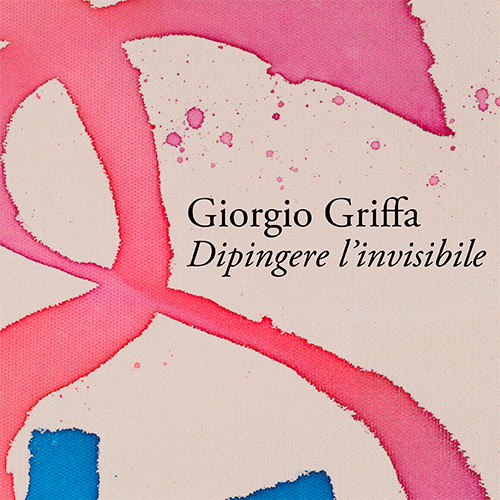Eagle's Banner returns home after restoration
Sixteen years after the devastating 2009 earthquake, the Gonfalone dell’Aquila, an extraordinary 16th-century work by Giovan Paolo Cardone, finally returns to its city after meticulous restoration by technicians from theOpificio delle Pietre Dure in Florence. The restoration of the ancient red silk oil-painted drape was financed by theItalian Banking Association (ABI) and the member banks of the Association’s Cultural Relations Working Group, as part of the “It’s Culture!” initiative, which promotes the preservation of Italy’s artistic heritage.
The official presentation of the restored work was held in Florence before its return to L’Aquila. Among those present were Emanuela Daffra, Superintendent of the Opificio delle Pietre Dure, Federica Zalabra, Director of the Museo Nazionale d’Abruzzo (MuNDA), and Antonio Patuelli, President of ABI. A solemn moment that marks the conclusion of a long journey of recovery and restitution to the L’Aquila community.
The Gonfalone, of imposing dimensions (460x323 cm for about 15 square meters of surface area), was made between 1578 and 1579 to replace an earlier banner that the city of L’Aquila had donated to St. Peter’s Basilica on the occasion of the Jubilee of 1575. The commission was given to Giovan Paolo Cardone, one of the leading exponents of Abruzzo Mannerism, who produced a work of great artistic and symbolic value.
The painting depicts the Virgin prostrate before Christ, surrounded by the patron saints of L’Aquila: Maximus, Peter Celestine, Bernardine and Equizio. To her right is an angel holding a chrism cruet, flanked by the scourging column. Two angels at Christ’s feet hold a pyx, a clear reference to the consecrated host. The red background is decorated with small golden flames, a symbol of the Holy Spirit, resting on the city. The scene is framed by golden friezes and medallions bearing the black eagle of the civic coat of arms and the Bernardine trigram, within a radiant sun. Completing the composition are five lower “draperies” with the images of St. Anthony of Padua, St. Francis of Assisi, St. John of Capestrano and several bishop saints.
For centuries, the Gonfalone was kept in the Basilica of San Bernardino, from which it was carried in procession every August 10 to invoke the “serenity of the air.” In 1815 it was moved to the 16th-century Castle, where it suffered earthquake damage in 2009. Recovered from the rubble, it was transferred to the Paludi Museum in Celano and, in 2013, thanks to ABI funding, entrusted to the Opificio delle Pietre Dure for restoration, which was completed in 2015.
The intervention was particularly complex: in a first phase, restorers removed deposits accumulated over time and as a result of the earthquake, and then proceeded to the documentation, mapping and in-depth study of the work. Cleaning was followed by consolidation and reattachment of the raised textile parts. To ensure the best possible result, tests with new adhesive materials were conducted and evaluated through tensile strength tests. Finally, the pre-existing lining was removed to avoid further damage to the original structure.
The return of the Gonfalone to L’Aquila represents a moment of great historical, artistic and identity value for the city, which re-embraces a symbol of its tradition after years away. A work that, after traversing centuries of history and passing the test of the earthquake, finally returns home.
“The Italian Banking Association,” said ABI President Antonio Patuelli, “is proud to have contributed to the restoration of the L’Aquila Banner. This important project testifies to the strength of collaboration to safeguard and protect our artistic, historical and cultural heritage. The restoration, supported by the banks and supervised by the Opificio delle Pietre Dure in Florence, is an example of Italian excellence in the protection of cultural heritage.”
Emanuela Daffra, Superintendent of the Opificio delle Pietre Dure, says, “The Opificio delle Pietre Dure has been working for years on the front line for works damaged by natural disasters with the aim of preserving them, restoring them and returning them to their communities. In these cases the difficulties are many: of intervention, certainly, but also of returning them to wounded and changed contexts. Concerted and synergistic action between different actors, bringing together restoration expertise, museum heritage enhancement and private support is one of the keys to overcoming these difficulties. The affair of the monumental and fragile Gonfalone of L’Aquila is a perfect example.”
“In view of the upcoming opening of the National Museum of Abruzzo at the Castello Cinquecentesco, we wanted to bring the Gonfalone home,” explains Federica Zalabra, Director of MuNDA - National Museum of Abruzzo in L’Aquila. “We won’t be able to display it as we planned because they haven’t yet given us back the wing where we will permanently display it, but we will set up a temporary room where small groups of visitors can admire the work, even with new technological solutions, and finally regain possession of a piece of our heritage, also in view of L’Aquila Capital of Culture.”
The Gonfalone of L’Aquila returns home after restoration After the 2009 earthquake, the monumental Gonfalone of L’Aquila, a 16th-century work by Giovan Paolo Cardone, returns to the city after a lengthy restoration funded by ABI and carried out by the Opificio delle Pietre Dure in Florence. Gonfalone dell’Aquila: the restored masterpiece returns to the city

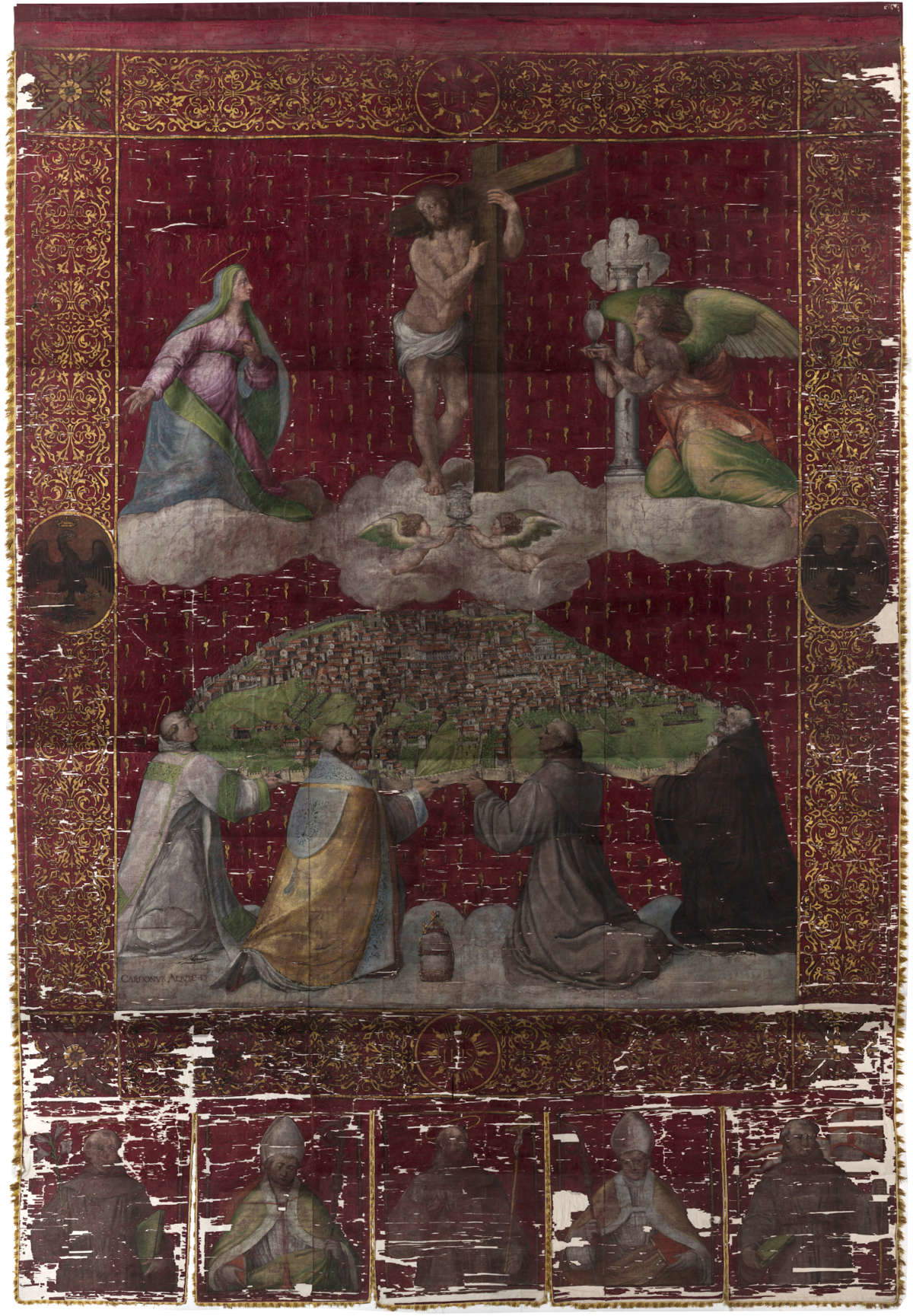
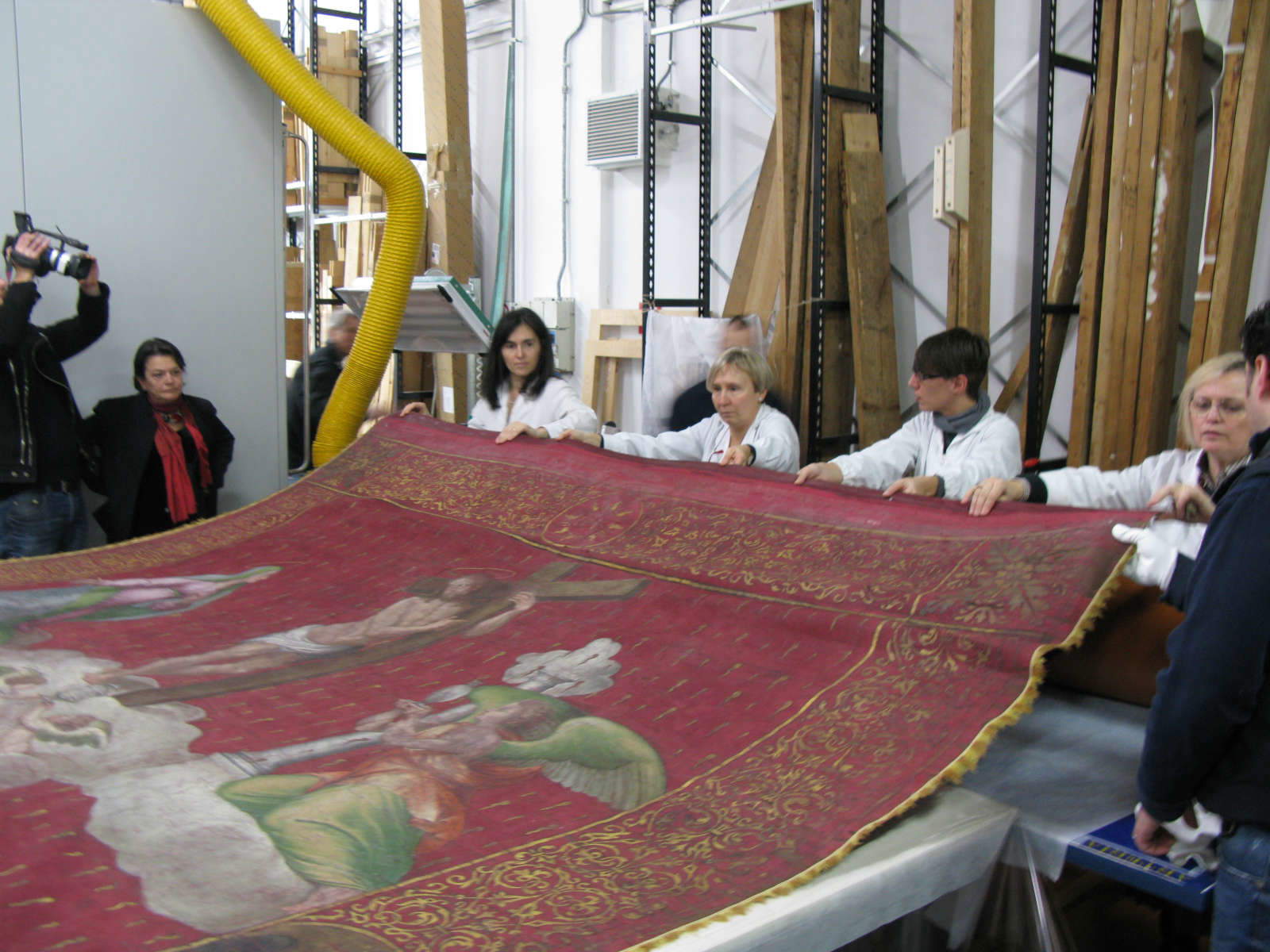
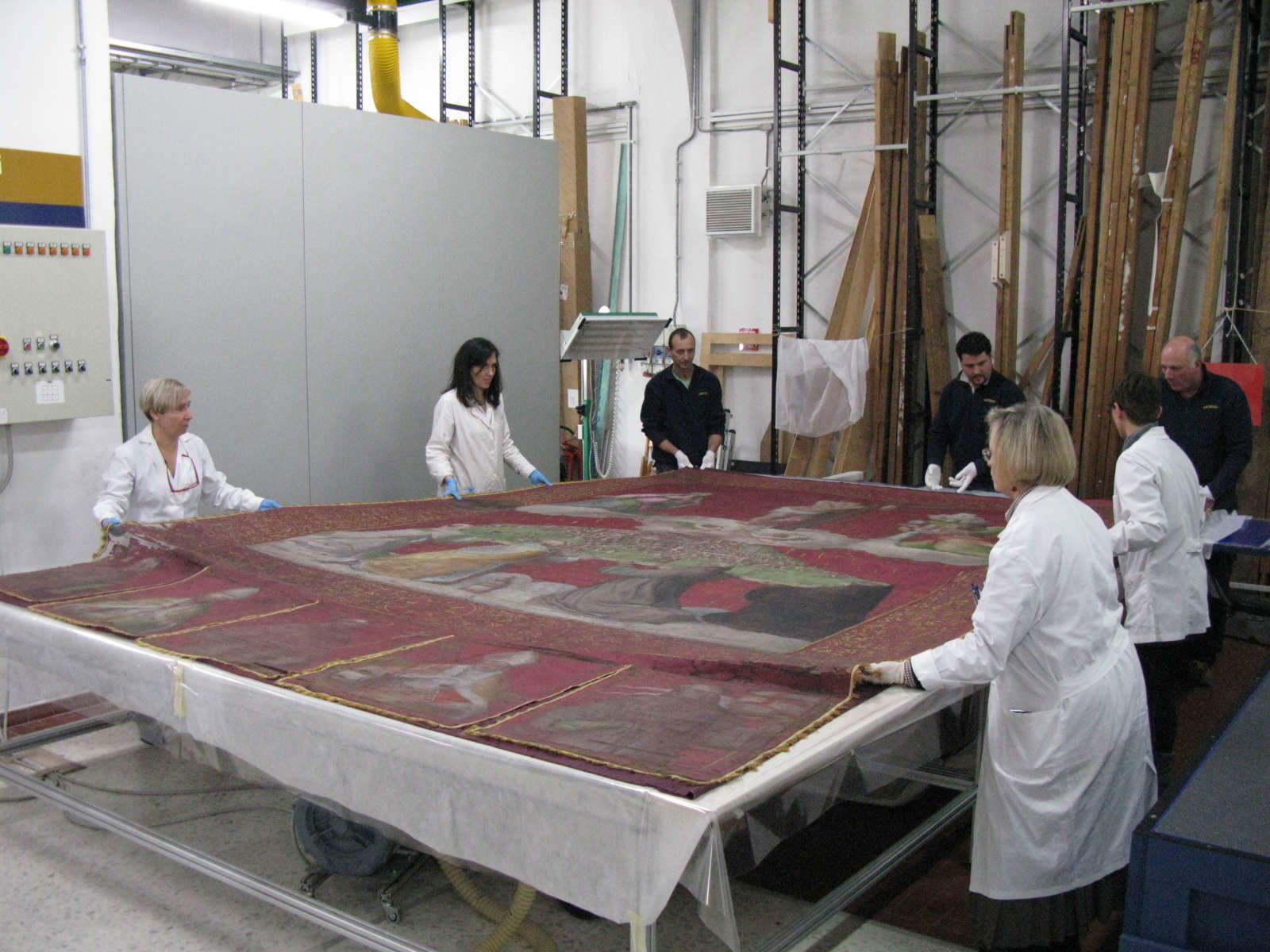
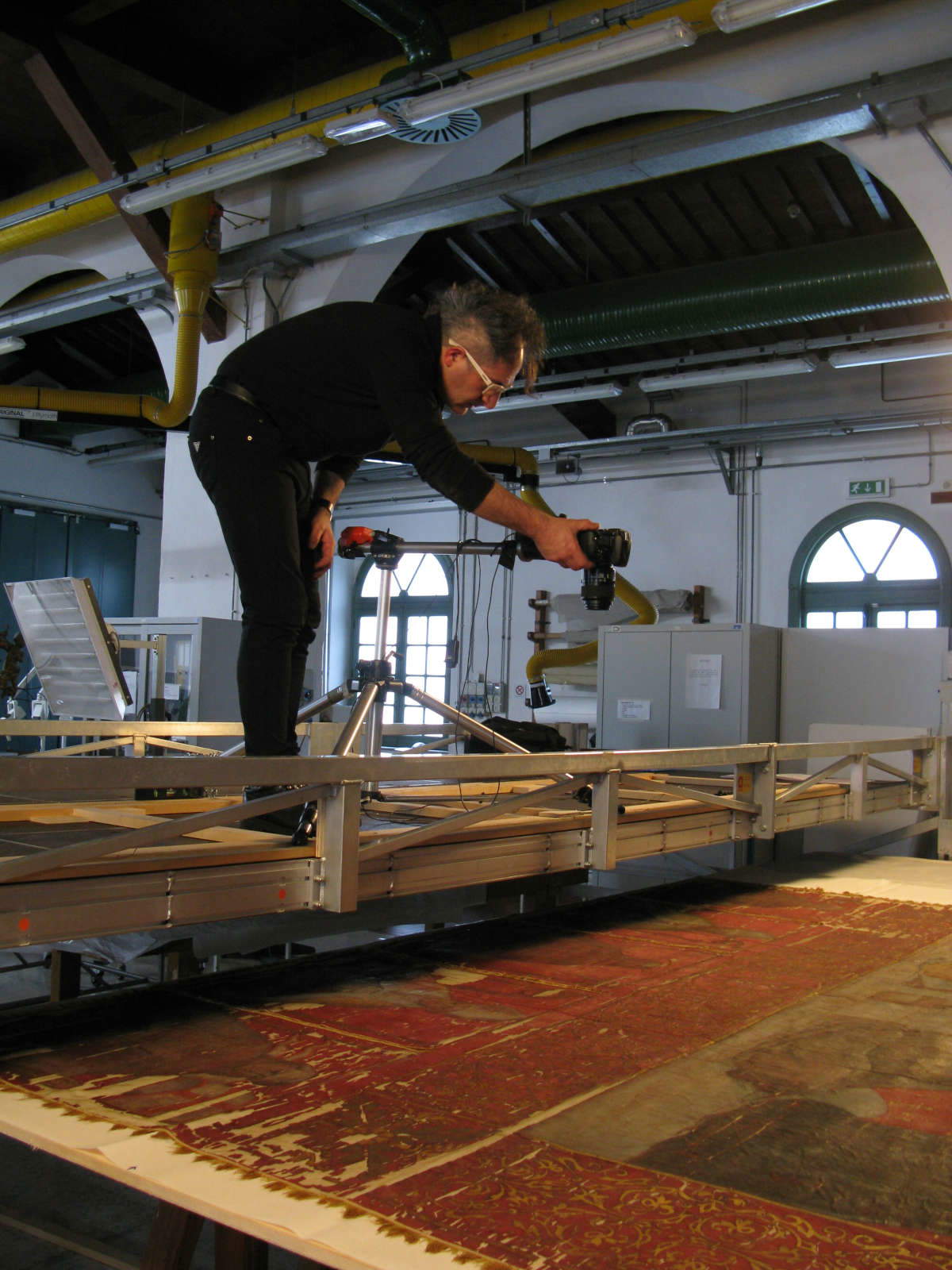
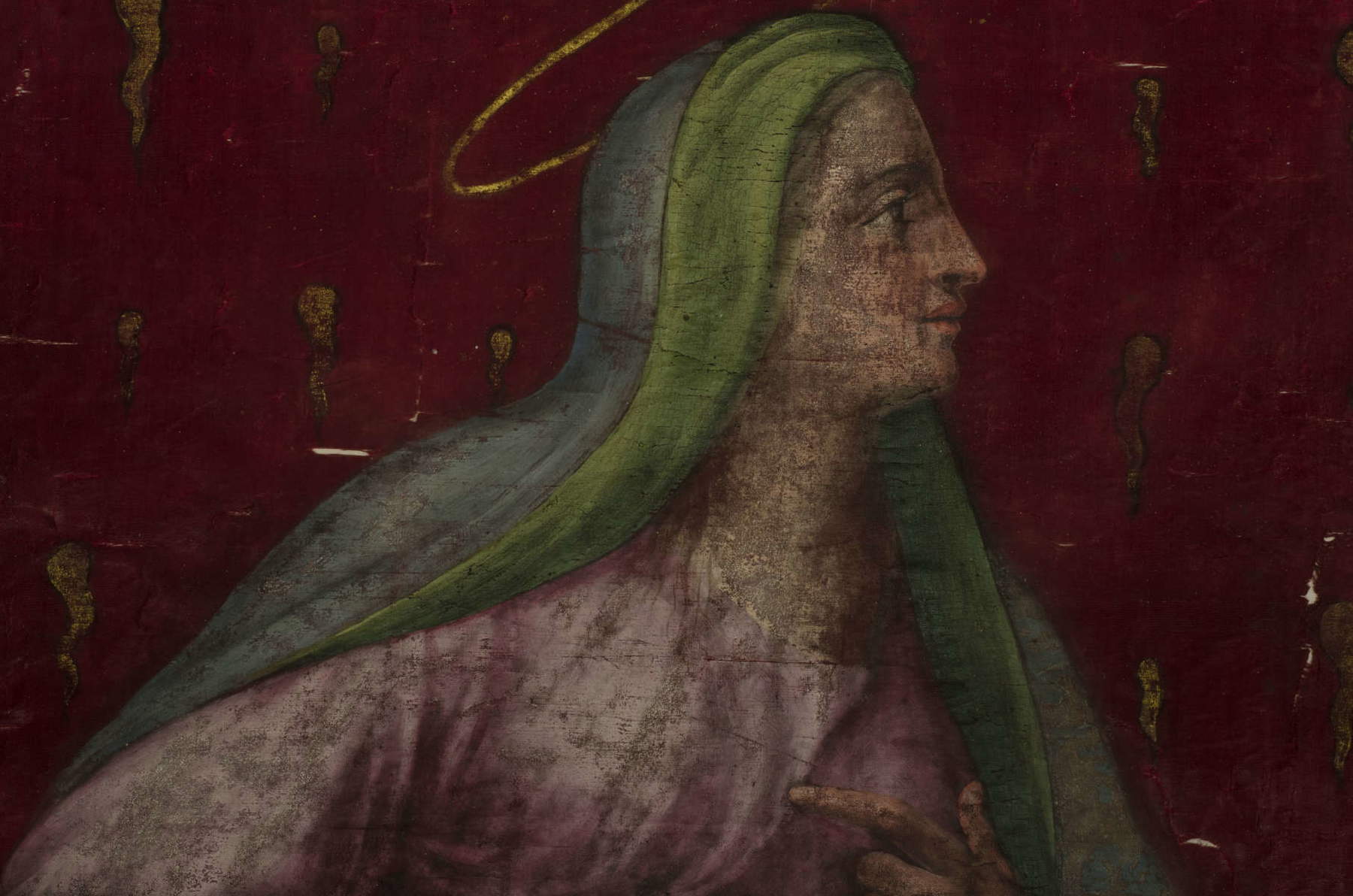
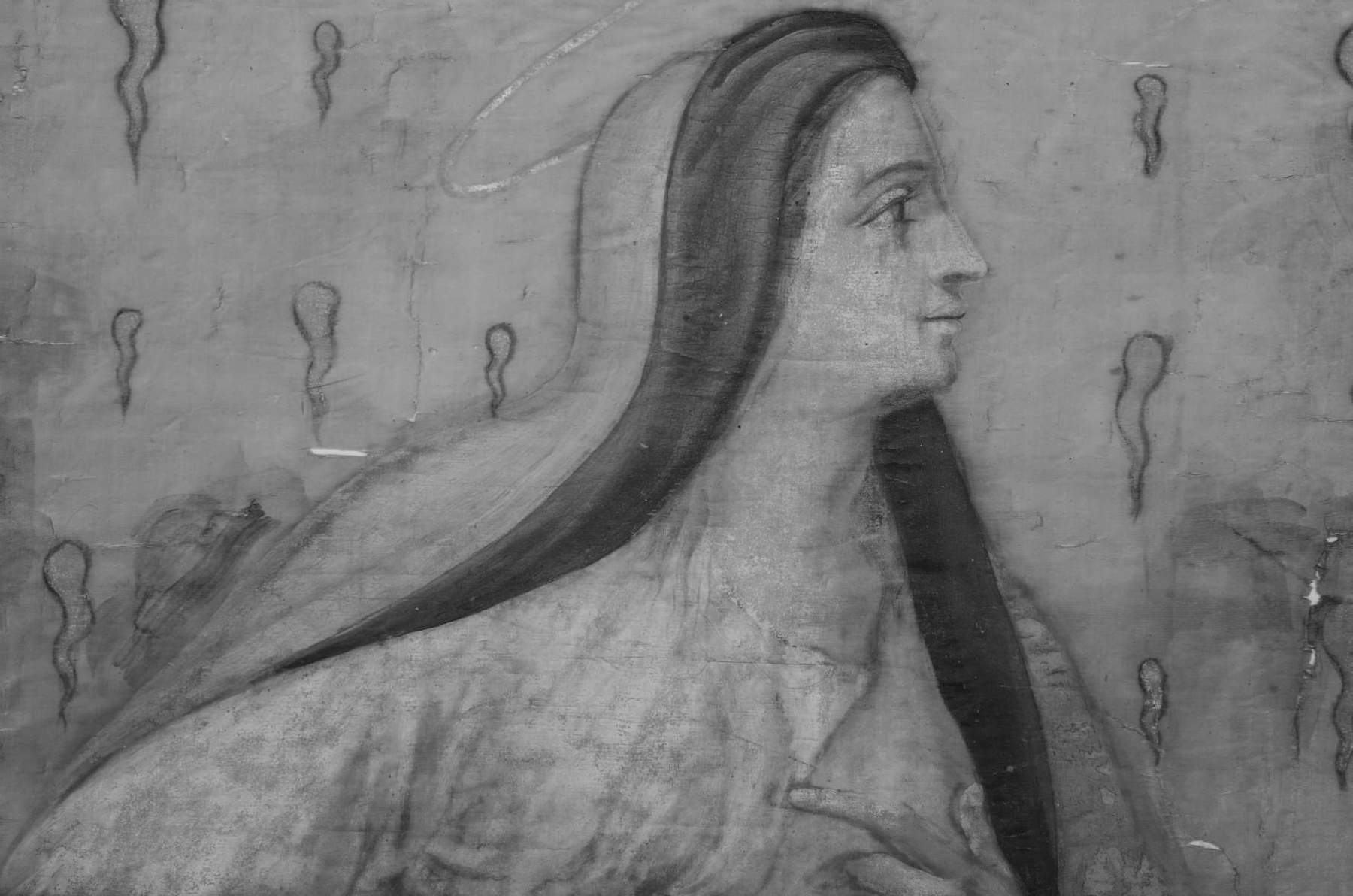
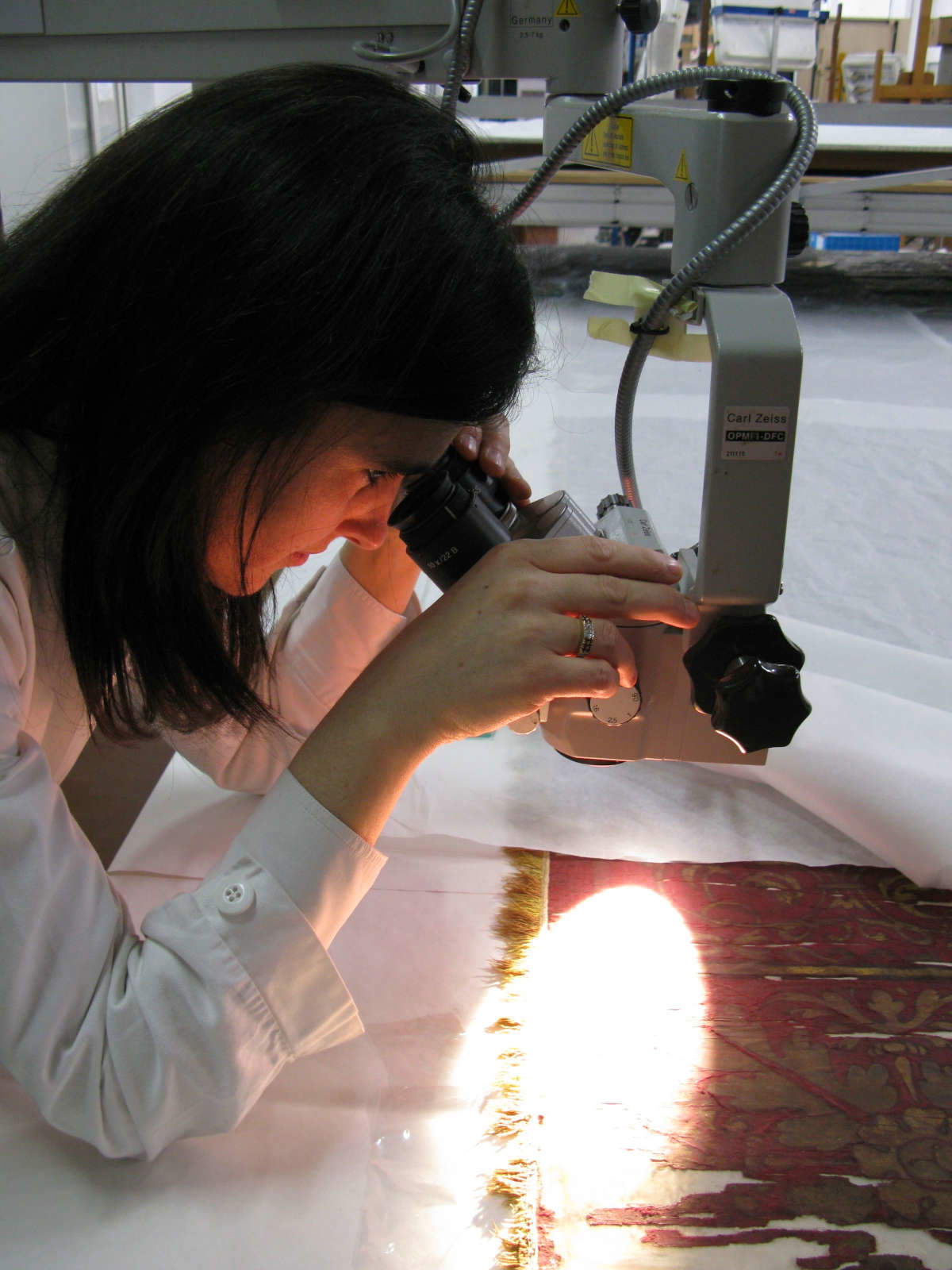
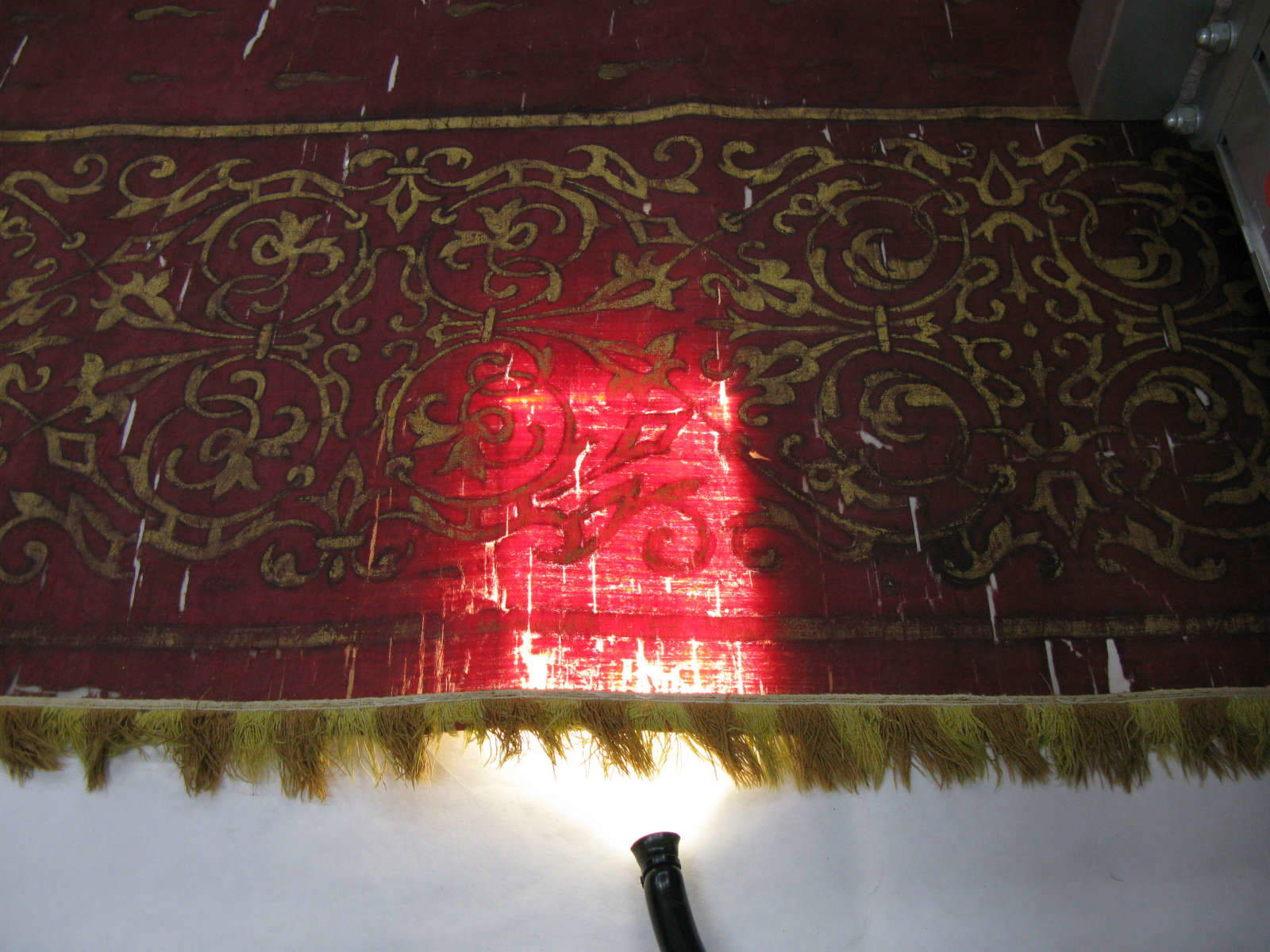
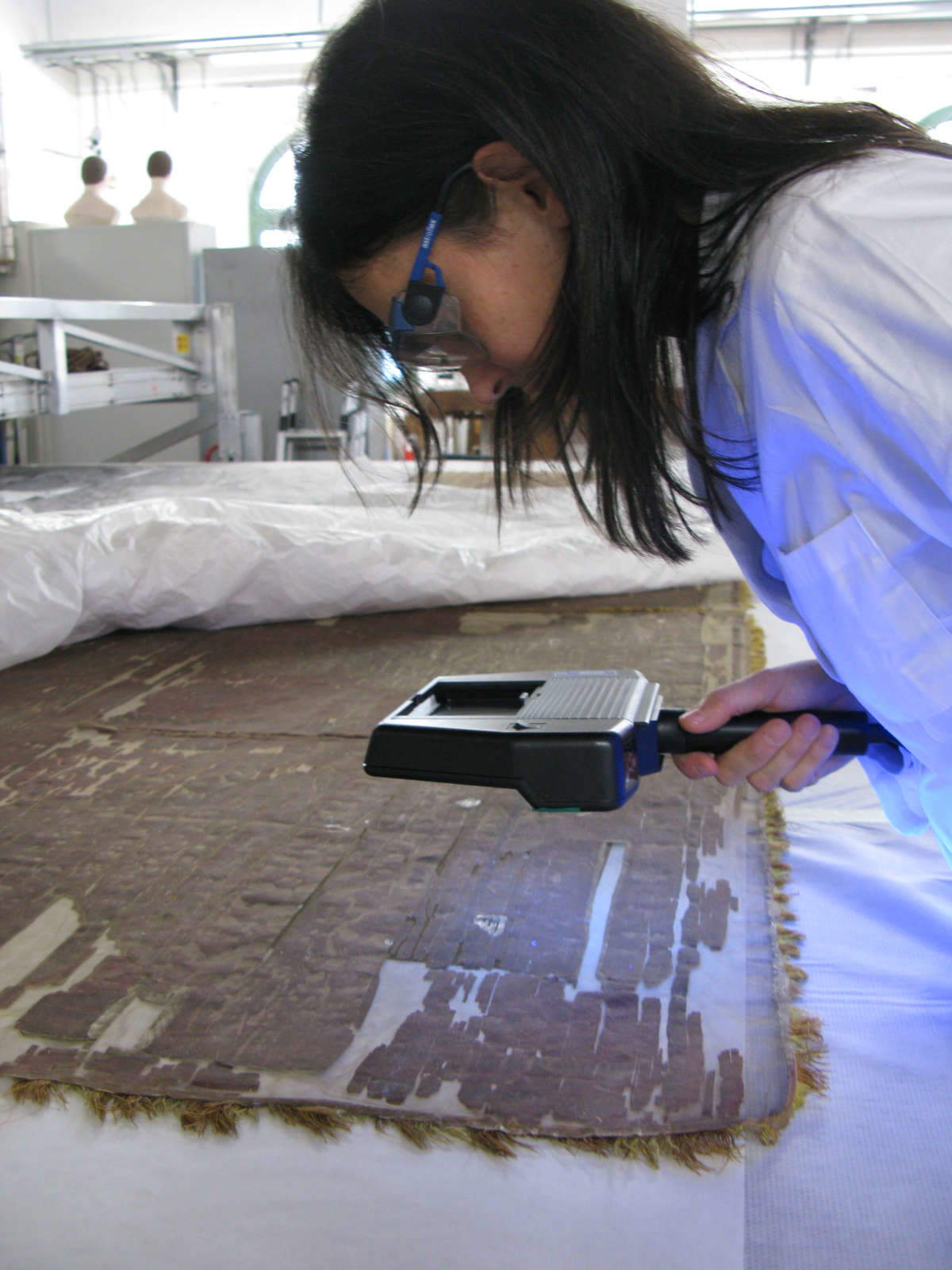
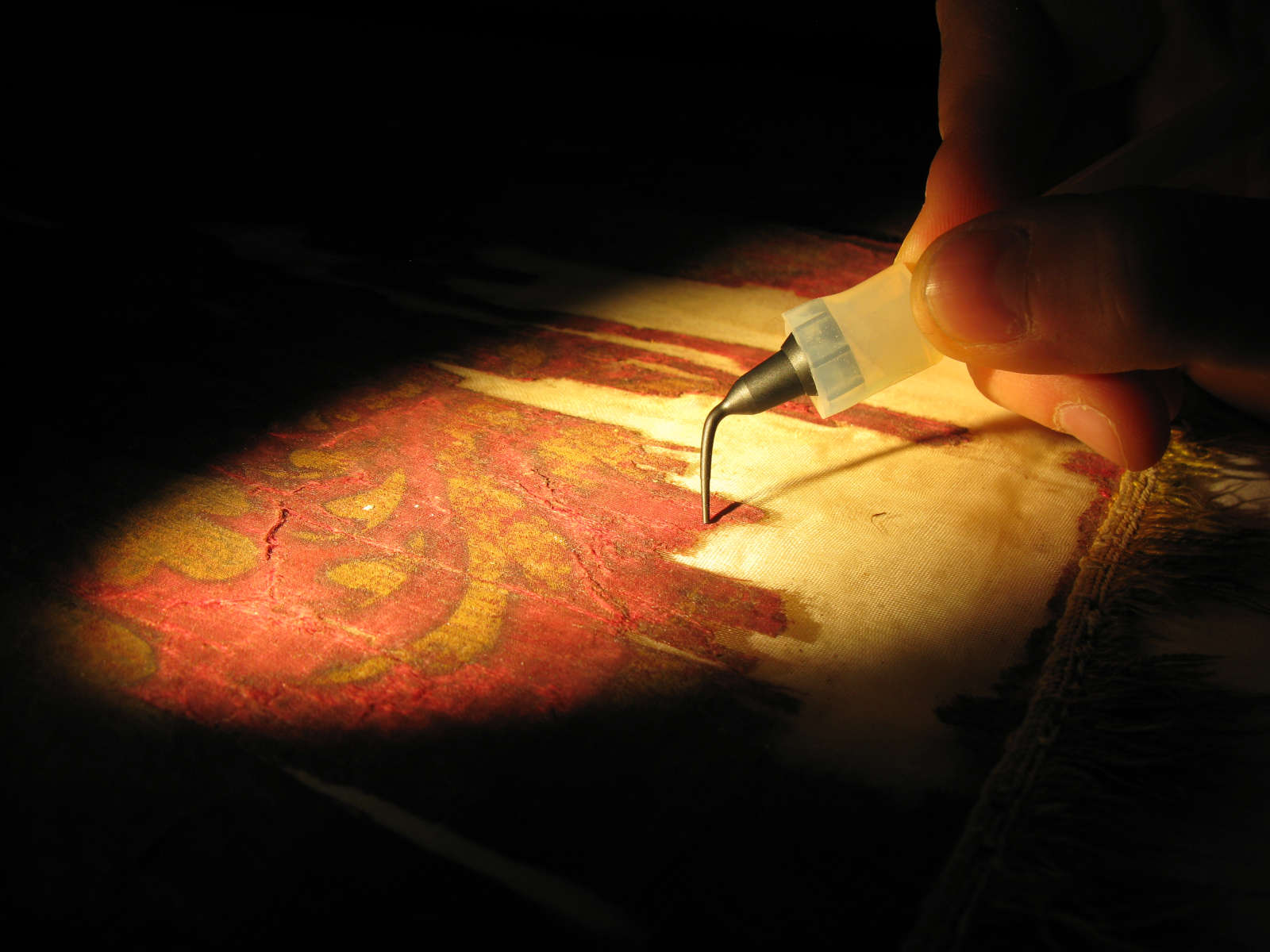
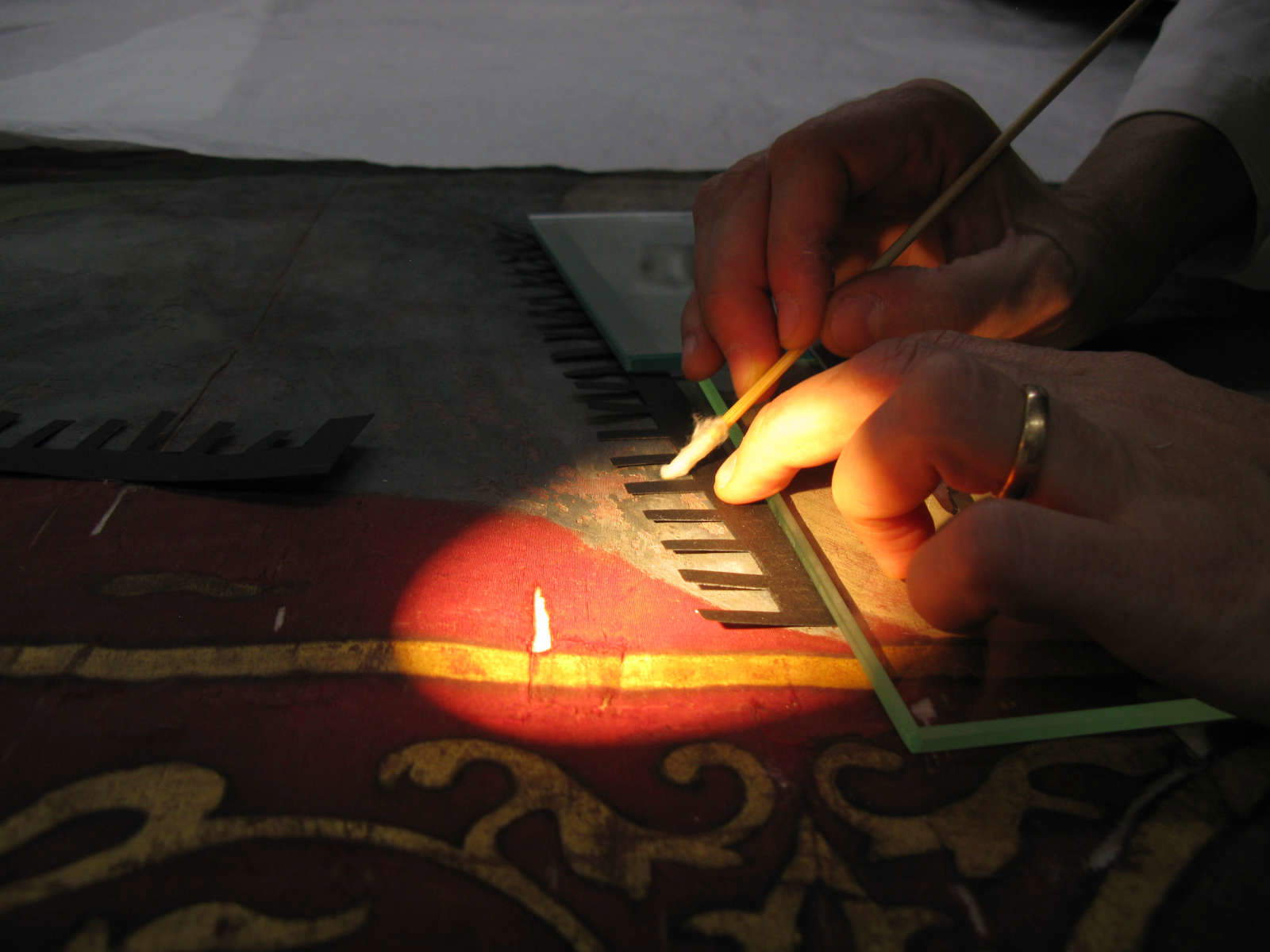
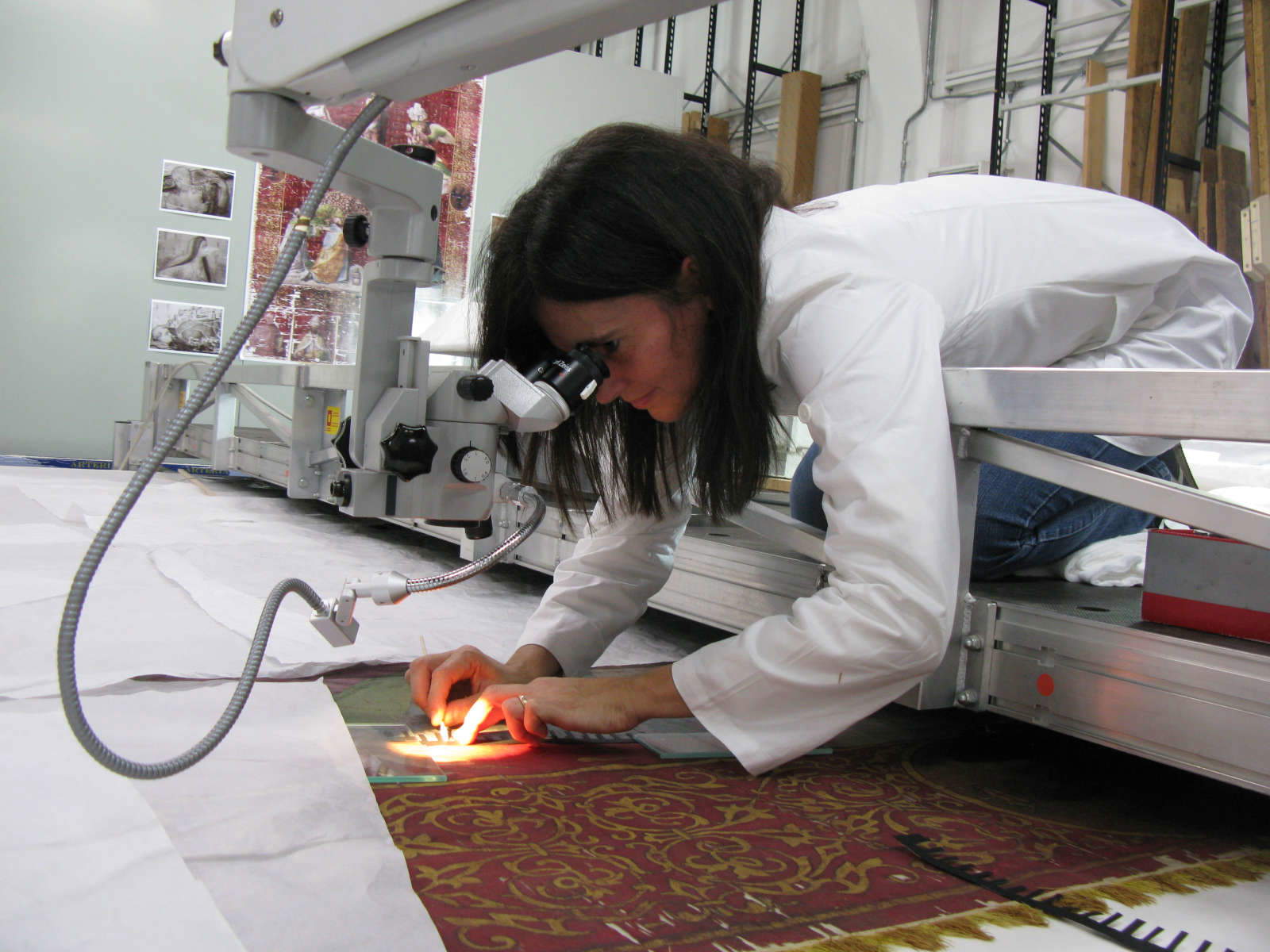
The restoration in detail
The main challenges in the intervention on this work, completed in December 2015, concern the intrinsic fragility of its constituent materials and its large size, which make any handling extremely delicate and therefore to be planned in detail.
The Gonfalone’s state of preservation is based on a fragile balance dictated by the intervention in the 1980s, which allowed it to be displayed vertically by consolidating all of the red silk - fragile and ragged - with a new lightweight and transparent synthetic fiber support by adhering it to the original fabric with a heat-activated vinyl resin. To mitigate the disturbance caused by the many gaps, a lining of the same color as the background fabric was also applied under the entire surface, joined at the top of the Gonfalone with a seam visible only on the back.
Upon arrival at the Opificio laboratories, the work showed a substantial deposit of inconsistent material over the entire surface and numerous deformations of the fibers of the original support and the areas painted with oil color. In addition, numerous fragile lifts of the original fabric from that of the restoration were found, particularly at the innumerable and articulated textile gaps.
The work was documented, studied and mapped in detail. The thorough diagnostic campaign confirmed the intrinsic interaction and fragility of the constituent materials and the need for conservation intervention. As a first phase, cleaning was prepared, consisting of gradual and controlled vacuuming of the inconsistent deposits on the entire surface and, following testing, and cleaning of the polychromy.
The second phase of the intervention set out to consolidate and reattach the textile lifts. The complex and articulated operation was preceded by a series of preliminary tests that demonstrated the impossibility of reactivating again the adhesive used in the previous ICR restoration, and was enriched by the experimentation of new adhesive materials, tested with tensile strength tests. The good results of the experimentation made it possible to use conservation materials in line with those used in the 1980s, and capable of not causing additional stress to the fragile silk of the support and pictorial layers. The existing lining was removed from the seam of the Gonfalone so as not to cause further aggravation to the original structure, treated for cleaning, and prepared for a new system of connection to the head of the work through Velcro tapes, thus maintaining its function as an optical closure of the gaps, in anticipation of a future exhibition of the Gonfalone, which will, however, have to involve placement no longer vertically but on a specially designed inclined plane so as not to cause further acceleration to the degradation of the constituent materials.
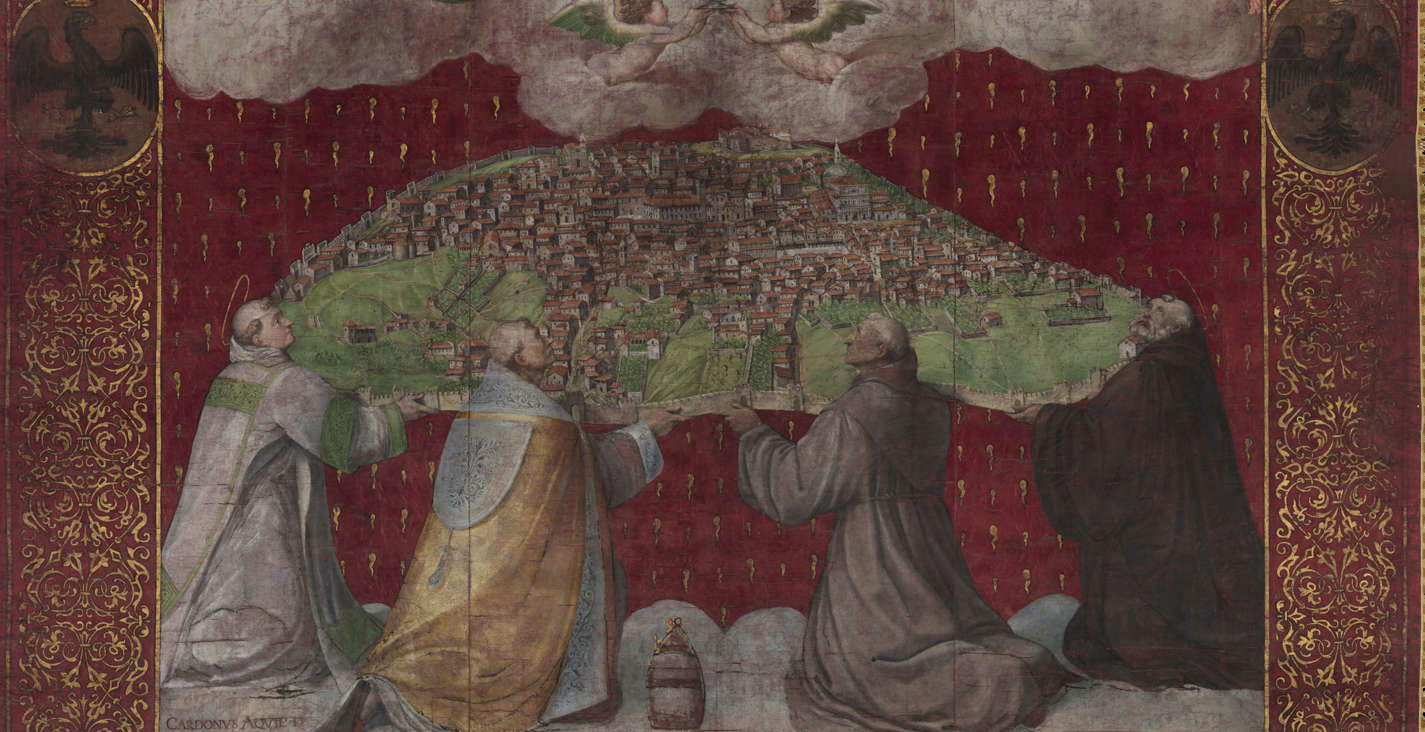 |
| Eagle's Banner returns home after restoration |
Warning: the translation into English of the original Italian article was created using automatic tools. We undertake to review all articles, but we do not guarantee the total absence of inaccuracies in the translation due to the program. You can find the original by clicking on the ITA button. If you find any mistake,please contact us.





